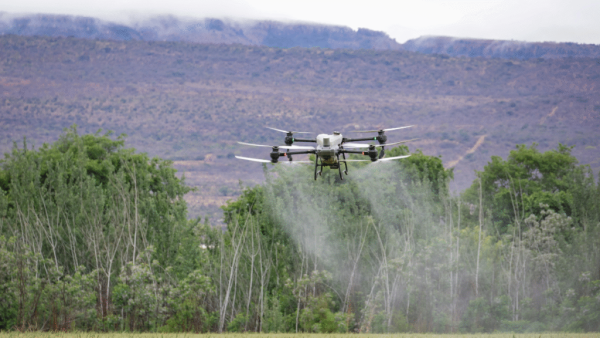
If sugarcane could speak, Maharashtra’s farms would sound anxious — worried about unpredictable rain, soil salinity, and the chemical exhaustion that builds up over years. Farmers, though experienced, often detect these stresses too late — when pests infest fields and yields decline. But what if technology could allow sugarcane to “speak” — to warn farmers before it’s too late?
That vision lies at the heart of a new approach that blends Artificial Intelligence (AI), nanobiotechnologyand farmers’ traditional wisdom to create “talking fields.” Maharashtra’s MahaAgriTech initiative has already integrated AI and satellite imagery into farming; the next step is to go beyond merely seeing crops from above — to actually “listen” to them at the molecular level and respond intelligently.
Imagine a farmer in Solapur waving a sugarcane leaf in front of his phone. Within seconds, an AI model detects subtle discoloration invisible to the naked eye, confirms early drought stress using soil sensors and satellite imagery, and sends a message:
Mild water stress detected. Apply 10% less nitrogen and use nano-bio foliar spray.”
What once sounded like science fiction is now becoming real — as AI and nanotechnology converge to create precision-based, eco-friendly agriculture systems.
AI trained on real-time images and farm data can forecast water shortages, pest outbreaks, or nutrient imbalances days before symptoms appear. Yet, data alone doesn’t heal crops — that’s where nanobiotechnology steps in. Biogenic nanoparticles derived from microbes or plants can deliver nutrients directly, boost plant immunity, and suppress pathogens without toxicity. Together, these create a closed feedback loop: the plant emits distress signals, AI diagnoses the issue, and nanotech delivers the cure.
This can work through a tiered ecosystem. On the ground, farmers use affordable sensors and mobile apps connected to the MahaAgriTech cloud. In laboratories, researchers develop nano-bio products targeting specific stresses. Local Krishi Vigyan Kendras (KVKs) and cooperatives then train farmers to apply these AI-driven solutions. The system ensures scientific precision while keeping rural usability simple.
The potential impact is massive. Early stress detection and nano-bio interventions can increase water-use efficiency by 30%reduce fertilizer and pesticide use by 40%and enhance sugar yield and recovery by 15–20%. Lower input costs, better soil health, and greener productivity could redefine Maharashtra’s sugarcane economy — making it more resilient to erratic monsoons and inflationary pressures.
However, challenges persist. Digital literacy among small farmers is limited, IoT devices are costly, and data privacy concerns remain. Solutions could include open-source AI tools in Marathi, public-private partnerships to subsidize sensors, and district-level digital training programs. Modular AI-nano systems would allow gradual adoption tailored to each region’s readiness.
Yet, technology must serve farmers — not intimidate them. In rural Maharashtra, where agriculture is a tradition as much as a livelihood, digital tools must be intuitive. The goal isn’t to replace a farmer’s instinct but to enhance it. An icon- and voice-enabled Marathi app could make even complex AI systems accessible to every farmer.
Beyond practicality, there’s a poetic truth here. Plants constantly “speak” through chemical cues and subtle leaf-reflectance changes long before visible symptoms appear. AI merely translates these hidden messages; nanobiotech responds with targeted care. The result is a true dialogue between the farmer and the crop — with science acting as nature’s interpreter.
If successful, this model could extend to cotton, soybean, and ricehelping India reduce chemical dependency, improve soil fertility, and build climate resilience. It redefines agricultural intelligence — not as data in machines, but as shared wisdom between nature and innovation.
In pushing Maharashtra toward AI-driven agriculture, integrating nanobiology introduces the vital element of adaptability. It envisions a future where crops don’t just grow — they converse. Where technology anticipates problems, delivers precise solutions, and maintains ecological balance.
Perhaps the real future of farming isn’t about teaching farmers to program machines —
but teaching machines to care.
This article is authored by Sanyukta Salve, Dr. Rajendra Patil, and Anaya Phatak are biotechnology researchers and innovators from Savitribai Phule Pune University, focusing on AI, nanobiotech, and sustainable agriculture. Their work aims to enhance crop productivity, climate resilience, and rural livelihoods.